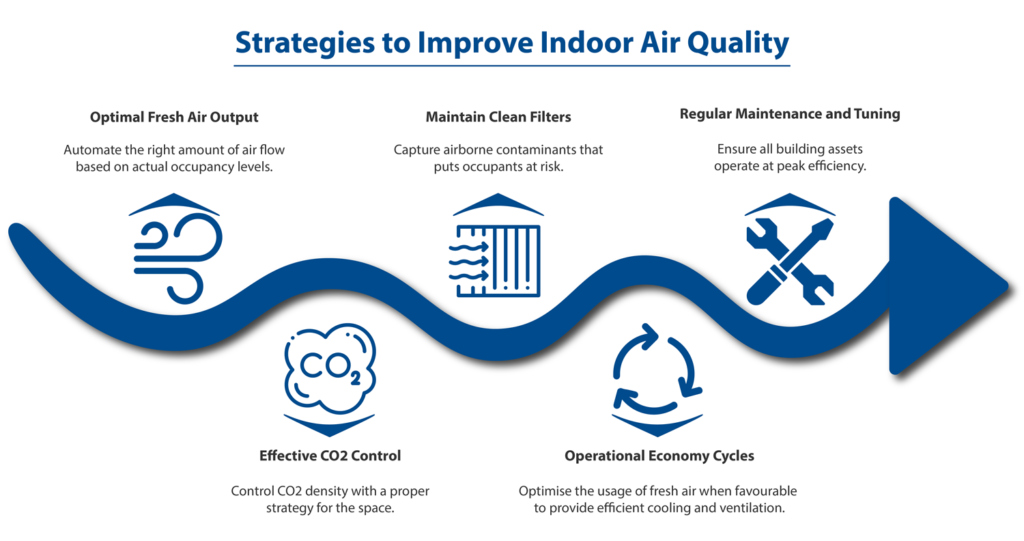Best Laptops for Mechanical Engineering Students in 2020
Back then mechanical engineering was about studying the objects and systems in motion. These days, it’s not JUST limited to studies but it also involves making complex designs, machines, and equipment, etc. that are highly efficient. A laptop that can run computer-aided design (CAD) and manufacturing software can be helpful and that’s why a lot of colleges and universities require the mechanical engineering students to carry a good-quality laptop.
Having a laptop can save costs involved in preparing a physical design, provide real world simulation for the design, save huge time, and also allow you to perform investigations that are not possible in the real world or are risky. That’s why we think that having a laptop is really important for mechanical engineering students.
Besides, you won’t just use your laptop for design process or manufacturing of machines, equipment, robots, etc. but you’ll also be using it for a lot of other mechanical engineering fields such as Finite element analysis (FEA), Computational fluid dynamics (CFD), etc. So doesn’t matter what field of mechanics you want to major at, having a laptop can be really helpful.
Now that you understand how laptops can be helpful for engineering students, especially for mechanical engineers, you surely must be looking for the best-rated models that’ll help you through the course and even after completing it. That’s why we we’ve listed out the 10 best models for you to consider.
Recommendations for Laptops to be used for Mechanical Engineering Students
- Highly Fast CPU
- Exceptional GPU/Display
- Excellent RAM
- Good Battery Life
Best Laptops for Engineering Students mechanical in 2020
10. Dell G5 15
- CPU: 9th Gen Intel Core i7-9750h
- RAM: 16GB
- Storage: 256GB SSD + 1TB SATA HDD
- Display: 15.6-Inch FHD Anti-Glare LED backlight Non-Touch narrow Border IPS
- Weight: 8.65 Pounds
- Battery Life: ~5 hours
9. HP Omen 2019
- CPU: Intel Core i7-8750H 2.2-4.1GHz
- RAM: 16GB DDR4 2666MHz
- Storage: 128GB SSD + 1TB HDD
- Display: 15.6-inch diagonal FHD IPS Anti-Glare micro-edge WLED-backlit
- Weight: 5.31 Pounds
- Battery Life: ~5 hours
Design:
HP sapped the color from the Omen 17, leaving us with a more sophisticated design. The Omen 17 is an imposing beast: At 15.9 x 11.6 x 1.1 inches and 7.1 pounds, this laptop is best left on a desk. HP may have opted for an understated black-and-gray color scheme with the new Omen 17, but the gaming laptop retains the aggressive lines of its predecessors. Angled vents on the sides and rear make the Omen 17 look like a sports car.
Competing gaming laptops with Max-Q graphics, like the 17-inch Lenovo Legion Y740 (16.2 x 12 x 0.9 inches, 6.6 pounds) and Dell G7 15 (14.4 x 10.8 x 0.8 inches, 5.5 pounds), are predictably thinner and lighter than the Omen 17, while gaming rigs with full RTX GPUs, like the Digital Storm Avon (15.5 x 10.2 x 1.6 inches, 5.7 pounds), are thicker but lighter.
Durability & Security:
It’s a good thing our review unit came with so much storage, because the Omen 17 is packed with preinstalled software. I counted 10 separate HP programs listed in the Windows 10 start menu. Some are quite useful, others can be uninstalled.
HP’s Omen laptops just keep getting better. This latest 17-inch model impresses with a bright 1080p, 144-Hz display, powerful RTX 2070 graphics and a comfortable RGB keyboard. But so do a lot of other gaming laptops. What really differentiates the Omen 17 is its competitive price. At $1,629, the Omen 17 is one of the best bang-for-your-buck gaming laptops around. Of course, there were some shortcuts taken: The laptop is mostly plastic, and its battery lasts for only a few hours.
If you need better endurance, we recommend the Digital Storm Avon, which gets you similar performance but longer battery life in a lightweight chassis. At this price, you can also go with the Dell G7 15, a 15.6-inch gaming laptop with a stylish design and good performance. If price isn’t an issue, then check out the $3,200 Razer Blade Pro 17, or throw caution to the winds and splurge on the ludicrous Alienware Area-51m.
Display:
The 17.3-inch, 1080p display gets plenty bright and vivid, and gamers will also appreciate the panel’s 144-Hz refresh rate when playing fast-paced games.
The display was sharp enough for me to see the war paint splattered across the heads of enemies and the ancient patterns on the hilt of my sword. The blue hues of my flaming sword and the dark shades in my cape weren’t dull, but they didn’t stand out on the matte screen, either.
The Omen 17’s display covers 104% of the sRGB color gamut, making it slightly less colorful than the panels on the Avon (111%), Legion Y740 (122%), G7 15 (114%) and the mainstream gaming average (133%).
Performance:
Equipped with an Intel Core i7-9750H CPU and 16GB of RAM, the Omen 17 isn’t just for gamers but also creators and power users who use demanding programs. Our video-transcoding test proved difficult for the Omen 17, which needed 10 minutes and 16 seconds to convert a 4K clip into 1080p resolution. That’s not a slow result (the category average is 10:32), but the Legion Y740 (9:30), Avon (7:01) and G7 15 (8:05) completed the task faster.
The proof is in the pudding: The Omen 17 blazed through my typical workload when I used it as my work PC for a day. I quickly jumped from page to page, only to look up and realize that 25 Chrome tabs were running in the background the entire time. The Omen 17 scoffed at me when I tried tripping it up with 15 more tabs, four of which played 1080p YouTube and Twitch videos.
Battery Life:
The Omen 17 powered down after 2 hours and 14 minutes on the Laptop Mag battery test, which involves continuous web surfing over Wi-Fi at 150 nits of display brightness. That’s a short runtime, even for a gaming laptop. Digital Storm’s Avon (2:14) and the G7 15 (3:12) endured for around an hour longer, and even the ephemeral Legion Y740 (2:30) edged out the Omen. The mainstream gaming laptop average is 3 hours and 56 minutes.
Pros & Cons
8. Acer Aspire 5
- CPU: Intel Core i5/Core i7
- RAM: 8GB/12GB
- Storage: 1TB HDD/256GB SSD, 1TB HDD
- Display: 17.3-inch, 1080p
- Size: 16.7 x 11.4 x 1.1 inches
- Weight: 6.6 poundS
Design:
The Aspire 5 is a visual upgrade from other Acer laptops. The notebook is black with silver accents. The Acer logo sits a the wave of ridges of its plastic chassis, while the engraved Aspire emblem gleams from the sleek silver hinge that just looks prestigious. The sturdy hinge allows me to bend it back so the display is parallel with the deck.
At 6.6 pounds and 16.7 x 11.4 x 1.1 inches, the Aspire 5 is on the heavy side, but that’s to be expected, given its large 17-inch screen and built-in optical drive. The Dell Inspiron 17 7000 2-in-1 is just barely lighter (6.4 pounds) and thinner (0.9 inches).
Durability & Security:
As with many Acer laptops, the Aspire 5 comes with a ton of its own brand-specific apps. Acer Care Center provides important system information and utilities to manage upkeep, as well as a way to create and manage backups. Quick Access is a small tab that provides three unique options. One cuts off power to the USB ports when the laptop is off. The second gives access to Bluelight Shield, which reduces blue light to protect your eyes. The final option is for Color Intelligence, which automatically optimizes the image quality, based on what’s displayed.
Acer offers a one-year limited warranty for the Aspire 5. See how the company performed on our Tech Support Showdown and Best and Worst Brands ranking.
The Acer Aspire 5 is a solid, big-screen system that gets the job done. For $999, you get a 17-inch laptop with an attractive design, bright, vivid display and strong overall performance with light gaming capabilities. The only downsides are the mediocre webcam and lackluster sound. Overall, though, the Acer Aspire 5 is a good multimedia laptop.
Display:
The Aspire 5’s 17.3-inch screen presents vibrant colors on its 1920 x 1080 matte IPS panel. Even when I watched Penny Dreadful, which is known for its dim lighting and grim color scheme, Ethan Chandler’s face appeared crisp and clear. The warm color from the sun breached through the stone cellar window onto the characters’ faces and defined each strand of hair on their heads. I would not have been able embrace these details on a smaller display. While playing Overwatch as Hanzo, the wide display let me see the minute details of Widowmaker’s helmet so that I could fire a bolting arrow across the map–but I ultimately missed due to my innate lack of skill.
According to our colorimeter, the Aspire 5 produces 114 percent of the sRGB color gamut, matching the Inspiron 17 7000 and the premium laptop average (114 percent), but beating the Acer Aspire E 15 (74 percent).
Performance:
The quad-core, 1.8-GHz Intel i7-8550U processor, 12GB of RAM and 256GB SSD (not to mention the 1TB 5400RPM HDD and upgradeable storage) all but guarantee that the Aspire 5 will deliver powerful performance. I only noticed a delay opening new windows when I had Overwatch, Discord, Steam and Google Chrome running while Fortnite was installing in the background.
The Aspire 5’s 256GB SSD duplicated 4.96GB of data in 35 seconds, translating to a speed of 145 megabytes per second. That’s below the category average of 279 MBps. While not necessarily a gaming laptop, the Aspire 5’s Nvidia GeForce MX150 GPU with 2GB of VRAM runs Overwatch smoothly at 57 to 60 frames per second on low settings. It also ran the DiRT 3 racing game at a quite high 136 fps, beating the 64-fps premium notebook average and the Inspiron 17’s 114 fps. However, this Acer struggled with more demanding titles such as Rise of The Tomb Raider, as it mustered a not-quite-playable 22 fps.
Battery Life:
The Acer Aspire 5’s battery life is decent for a big 17-inch laptop, but it won’t last a full workday. The system lasted 6 hours and 41 minutes on our battery test, which consists of continuous web surfing at 150 nits of screen brightness. That’s on a par with the Inspiron 17, which clocked 6 hours and 40 minutes, but it falls well below the 8:51 premium laptop average. However, this is a great time for a desktop replacement system, which typically average around 4:26.
7. Dell XPS 13
- CPU: Intel 8th Generation Quad-Core i5-8250U
- RAM: 8GB
- Storage: 128GB SSD
- Display: 13.3″ InfinityEdge Touchscreen FHD (1920×1080) Display
- Weight: 2.7 Pounds
- Battery Life: ~10 hours
Design:
From its exterior to its interior, the XPS 13 is a showstopper. The lid’s Frost White, anodized aluminum finish is cool to the touch and looks stylish going in and out my bag. The glossy Dell logo looks like a stylish broach, adding just the right amount of sparkle. I’m a fan of the twin-coil hinge that makes opening the laptop with one hand as simple as turning the page of a book.
At 11.6 x 7.8 x 0.6-inches, the 2.8-pound XPS 13 is one of the smallest ultraportables available. It’s 2% smaller than its predecessor. Once the laptop is open, you’ll find more of that winter white theme. Made from Dell’s patented glass-fiber weave, the stain-proof Arctic White deck is beautiful. Running my fingers across the textured surface is like ASMR, but for your hands. The keyboard is pushed toward the top of the deck, leaving just enough space for a glass touchpad.
Durability & Security:
The XPS 13 has an embedded Fingerprint Reader in the power button for easy login using Windows Hello. It’s a nice, easy way to add an extra layer of security. I do wish Dell had found a way to either add a physical shutter for the webcam or an electronic kill switch. Having to use a piece of tape mars the beauty of those barely there bezels.
The Intel Iris Plus GPU inside the XPS 13 isn’t really designed to handle hard-core gaming, but it works in a pinch. The laptop produced 59 frames per minute (fps) on the Dirt 3 gaming benchmark. That’s just below the 60-fps average, but still higher than the MacBook Pro (38 fps), the Intel Iris Plus GPU-equipped Surface Laptop 3 and the Spectre x360, all of which notched 47 fps. The Prestige, with its Nvidia GeForce GTX 1650 Max-Q GPU, hit 150 fps.
Display:
When you first look at the XPS 13, it’s what you don’t see that you’ll notice before anything else. This marks the first time Dell has ditched all the bezels, including the bottom chin. But Dell didn’t just ditch the thick bottom bezel, it managed to shrink the other three bezels even further, with the side bezels measuring 0.15 and 0.2 inches, respectively, and the bottom bezel slimming down to only 0.18 inches.
Bright and extremely vivid. I was transfixed by actress Tracee Ellis Ross’ ruby-red sequined dress that played up her light brown skin in The High Note trailer. Details were so sharp, I saw every pattern embroidered into Ice Cube’s inky-black smoking jacket.
As gorgeous as Ross looked, I was surprised that the XPS 13 wasn’t as vivid as I thought. At least, not on paper. In fact, the laptop reproduced 115% of the sRGB Color Gamut.
Performance:
For such a lightweight laptop, the Dell XPS 13 hits like a heavyweight. Packing an Intel Core i7-1065G7 (Ice Lake) processor with 16GB of RAM, the laptop allowed me to watch an episode of Tiger King on Netflix while running 25 other open tabs in Google Chrome — all without a stutter.
The notebook also performed well on our synthetic tests. On Geekbench 4.3, which tests overall performance, the XPS 13 achieved 19,053, handily beating the 16,669 premium laptop average. The Spectre x360, which also has a Core i7-1065G7 CPU, scored 18,408, while the MacBook.
Battery Life:
Whether you’re on the road or working from home, the XPS 13 can put in a full work day and then some. The laptop lasted a whopping 12 hours and 39 minutes on the Test which consists of continuous web surfing over Wi-Fi at 150 nits of brightness. The XPS 13 easily outclassed the 8:47 premium laptop average, as well as the Prestige 14 (9:49), the Surface Laptop 3 (9:17) and the MacBook Pro (8:41). But the Spectre x360 was the last laptop running, with a time of 13:20.
6. Lenovo Y700
- CPU: Intel Core i7 6th Gen 6700HQ Quad Core
- RAM: 16GB
- Storage: 256GB SSD + 1TB HDD
- Display: 15.6″ Full HD Display With 1920x1080p Resolution
- Weight: 5.72 Pounds
- Battery Life: ~5 hours
5. Asus VivoBook Pro
- CPU: 8th Generation Intel Core i7-8565U
- RAM: 16GB Storage: 256GB SSD + 1TB HDD
- Display: 17.3″ Full HD Wide View display with 72% NTSC
- Weight: 4.6 Pounds
- Battery Life: ~8 hours
Design:
The Asus VivoBook Flip 14 is a sub-$500 2-in-1 with a flexible design and clean looks. The 2-in-1 laptop has a stylish, clean design that is both practical and pretty. But while it’s an attractive package on the surface, the ZenBook lets users down because of what lies inside. A bland display, an underpowered processor and an awful webcam are simply too much to overlook. If you want an inexpensive laptop that can flip into a tablet, we suggest you avoid the VivoBook Flip 14. Fortunately, there are excellent alternatives to recommend instead.
The Asus VivoBook Flip 14 has a clean, if somewhat bland design. Its rounded corners, gray finish and notched base mimic the MacBook Pro, but the similarities end there. This 14-inch 2-in-1 has a massive bezel under the display, and its lid is fairly thick. When closed, the oddly shaped laptop reminds me of an ice cream sandwich.
Display:
What stands out about the VivoBook’s design is its flexibility. Two hinges rotate the display back 360 degrees, converting the machine into a tablet, or you can twist the laptop into tent mode for viewing movies or slideshows. A shiny, silver Asus logo is centered on the lid and SonicMaster branding adorns the deck. The 1920 x 1080-resolution touch screen display on the Asus VivoBook Flip 14 isn’t very good, but we’ve seen worse at this price. When I watched the trailer for the upcoming film Mile 22, Mark Wahlberg looked rather bland. When the action got going, the display’s weaknesses became more apparent. What should have been an intense fight scene with exploding colors was instead a washed-out battleground.
With an Intel Core m3-7Y30, 4GB of RAM and 64GB of eMMC storage, the VivoBook Flip 14 can handle basic tasks but buckles under a heavy workload. The laptop slowed down significantly when I launched a dozen Google Chrome tabs and watched a 1080p YouTube video. Even certain Windows processes, like enabling Cortana or opening the Start Menu, were delayed.
Performance:
The VivoBook performed slightly better in our file-transfer test, duplicating a 4.97GB mixed-media file in 2 minutes and 53 seconds for a rate of 29.4 megabytes per second. The Acer Spin 3 took longer to duplicate the files (28.6 MBps), while the Lenovo Flex 6 (35.8 MBps) and Acer Aspire E 15 (36.6 MBps) were a bit quicker. None of these laptops’ scores were anywhere near the mainstream category average (138.7 MBps).
The Asus VivoBook Flip 14’s Intel HD Graphics 615 is only powerful enough to play web-based games or less-demanding titles at lower settings. It ran Dirt 3 at 30 frames per second, which matches our playability cutoff. The Acer Spin 3 powered the same racing title at 38 fps, while the Lenovo Flex 6 produced an unplayable 14 fps. The mainstream laptop average is 49 fps.
Battery:
The VivoBook Flip 14’s battery life is slightly below par. It lasted 7 hours and 23 minutes on the Laptop Mag Battery Test, which involves continuous web surfing over Wi-Fi at 150 nits of brightness. That is significantly better than the Acer Spin 3’s time of just 6 hours. But the Flip 14 was outperformed by the 11-inch Lenovo Flex 6 (9:11) and Acer Aspire E 15 (7:48). The mainstream laptop average is a few minutes longer, at 7:37.
Pros & Cons
4. Apple MacBook Air
- CPU: 1.6GHz dual-core Intel Core i5
- RAM: 8GB
- Storage: 256GB SSD
- Display: 13.3-inch LED-backlit display with IPS technology
- Weight: 2.75 Pounds
- Battery Life: ~ 12 Hours
Design:
This resolution provides the best experience to the customers. The 15-inch display is amazing and exotic. The price point is also high because apple has also provided their amazing technology Retina Display as well. This technology provides further clearer and brighter colors.
Durability & Security:
Apple has upgraded its game in the past few years. Apple MacBook Pro is the best choice for you if you are looking for an expensive and fast working laptop. Some people may not agree with the price point as the model is quite expensive. But the working and graphic elements of this model makes it ideal for Kali Linux as well.
The price may not be an issue for some people as this model got a lot of attention for its display and storage capacity as well. We will break down every feature for you this time.
Display:
Another amazing factor about this model is that its graphics 2880×1800. It is the highest resolution you will see in Laptops and it is rare as well. This resolution provides the best experience to the customers. The 15-inch display is amazing and exotic. The price point is also high because apple has also provided their amazing technology Retina Display as well. This technology provides further clearer and brighter colors.
This apple laptop has an impressive graphics card as well. Apple has used Radeon Pro 560 with 4GB memory. This display is ideal if you are into gaming and love to spend on gaming laptops.
The laptop can also handle 4k videos and stuff. If you want to edit your stuff in high quality then no doubt this laptop is the best choice.
Performance:
The device has a best-storing capacity. If you are looking for the best laptop then you should check factors like Storage and RAM first. The amazing Apple MacBook Pro has storage of 512GB SSD storage. The storage cannot be updated but this capacity is enough to store files and run Pentest with better speed so you do not need to worry. The other impressive factor to talk about is RAM. The RAM of this laptop is 16GB 2133MHz LPDDR3 memory as well. The RAM capacity is pretty expensive and can also run games and other programs smoothly. This laptop no wonder is the best choice if you are looking for capacious and fast working laptops.
This laptop has an impressive Butterfly Keyboard and has a huge trackpad which makes working on this laptop much easier. The keyboard gives smooth feels and works perfectly as well.
Battery Life:
The battery timing is totally ideal. This model is offering you 8 hours of none stops battery to do your tasks for a long amount of time.
3. Dell Inspiron 15 7567
- CPU: Intel Core i5 7300HQ
- RAM: 8GB DDR4
- Storage: 256 GB SSD
- Display: 15.6-inch FHD (1920 x 1080) Widescreen LED-Backlit Display
- Weight: 6.61 Pounds
- Battery Life: ~7 hours
2. Acer Aspire E15
- CPU: 8th Generation Intel Core i7-8550U
- RAM: 8GB
- Storage: 256GB SSD
- Display: 15.6 inches Full HD widescreen LED-lit
- Weight: 5.27 Pounds
- Battery Life: ~15 hours
1. HP ENVY 13”
- CPU: Intel Core i7-8565u Dual Core 1.8GHz up to 4.6GHz
- RAM: 16GB DDR4 at 2400MHz
- Storage: 512GB SSD
- Display: 13.3-inch diagonal 4K backlit touchscreen
- Weight: 2.82 Pounds
- Battery Life: ~13 hours
Design:
You won’t find a more stylish, premium laptop for under $1,000. I’ve been using the Envy x360 13 for the past week and I still can’t believe it falls in our “mainstream” pricing category. What’s so surprising about the 2-in-1 Laptops is how similar it is to the much pricier sibling, the Spectre x360. This is a testament to HP’s ability and willingness to trickle down features from its flagship laptops to more affordable models.
t starts with the slim display bezels, which draw your eyes toward the screen and keep the chassis compact. That said, what struck me most about the Envy x360 13 is its miniature footprint. This convertible is very small. At 12.1 x 7.7 x 0.7 inches, the Envy x360 13 is more portable than the Envy-13.
The Envy x360 13’s aluminum chassis gives it a high-end feel akin to the MacBook Air or other expensive all-metal laptops. It also looks fantastic thanks to the Nightfall Black finish, which is a shade more interesting than black and a touch prettier than brown. Tying the design together are some gorgeous accents, like the slick HP logo on the lid, stylish speaker grilles underneath, Envy stamped on the hinge and some aggressive vents on the spine.
Durability & Security:
HP needs to consolidate its apps. I counted nine HP-branded apps on the Envy x360 13, many of which could be packaged into a single program. Instead, you have HP Audio Switch, HP Command Center, HP Documentation, HP JumpStart, HP… the list goes on.
Of these, HP Support Assist is the app you should be most familiar with. Its dashboard shows you important info about the laptop, including the remaining warranty, battery life percentage and storage remaining. It’s also the easiest way to download up-to-date software and drivers.
HP gets a thumbs up for including the Bang & Olufsen Audio Control app where you can use an equalizer to customize your sound profile. It’s two thumbs down for the unneeded bloatware apps, like Booking (it’s a good service but the app should be opt-in), Express VPN (same idea), McAfee Personal Security, Netflix and Amazon.
The Envy 13 x360 runs Windows 10 Home and comes with a one-year warranty.
Display:
This is another area where the Envy x360 13 punches above its weight class. The Envy 13’s 13.3-inch, 1080p Display is sharp, bright, and the colors are rich and accurate. None of these qualities are class-leading but I’d be happy with the screen even if it were on a much more expensive notebook.
A besieged frigate lit the night sky with a fiery orange hue and the red, white, and blue of the American flags draped over caskets stood out against the dreary gray sea below. The Envy x360 13 has a glossy screen that catches reflections in bright conditions, so keep that in mind if you like to work outside.
I wish HP had thrown in a stylus with the Envy x360 because the touchscreen responded quickly to my taps and swipes. Then again, not everyone would use the pen and making it optional keeps the price down.
Performance:
The tides have officially turned in AMD’s favor. The Ryzen 5 4500U CPU with 8GB of RAM in the Envy x360 13 delivers outstanding performance for the price, crushing its Intel-powered rivals by a significant margin. It even outperformed the $1,799 MacBook Pro on certain tests.
It’s not just about benchmarks, either. The Envy x360 13 breezed through my typically demanding workload, which involves 25 Edge browser tabs running in the background with YouTube Music cycling through my favorite songs. Google Docs can be finicky when a system is being taxed, yet I didn’t run into any problem as I wrote this review. Power users will still benefit from a beefier H-series CPU, but the amount of performance the Envy x360 13 gets you for $800 is simply remarkable.
Battery Life:
The Envy x360 13 lasts a full workday without needing to be recharged. We ran the Battery Test using both the old and new versions of Edge. On the old browser, the Envy x360 13 lasted for an outstanding 11 hours and 52 minutes while continuously web browsing at 150 nits of brightness. While it didn’t fare as well on the new browser, the 10 hour and 45-minute runtime it put up is still excellent.








